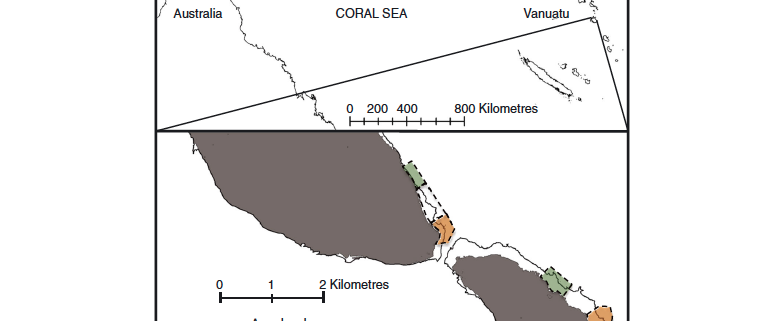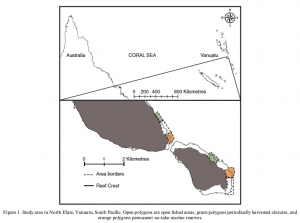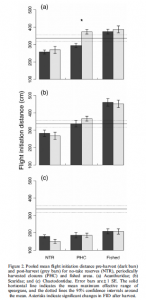Fishery Benefits From Behavioral Modification of Fishes in Periodically Harvested Fisheries Closures
by Pat Goebel, RJD Intern
In the South Pacific, periodically harvested fisheries closures are often implemented as a conservation and fisheries management tool. This is an important management tool because it allows resource users a greater say in the development and enforcement of rules, which in turn will lead to a successful fisheries management. Periodically harvested fisheries closures are areas of fishing grounds where fishing is normally prohibited, but is occasionally permitted for a short period. This is not to be confused with periodic closures, where areas of fishing grounds are normally open and occasionally closed. Previous studies have shown that periodically harvested closures can sustain higher fish biomass and larger individuals, particularly of targeted species. However, there is a lack of knowledge on whether periodically harvested closures can provide both social and ecological benefits.
A recent study conducted by Januchowski-Hartley and colleagues investigated the role of fish behavior, the effects of periodic harvest on fishery targeted families and total fish biomass in the Ngunao-Pele Marine Protected Area Network, North Efate, Vanuatu (Figure 1). A before-after-control-impact pair design, was used to quantify flight initiation distance (FID), and biomass of two fishery-target (Acanthuridae and Scaridae) and one non-target (Chaetodontidae) families in two periodically harvested closures, two no-take marine reserves, and two open fished areas, prior to and after harvest of the periodically harvested closures. Creel surveys were used to quantify catch per unit effort in open fishing grounds and during the periodic harvest.
Before harvest, FID of targeted families was higher in fished areas than periodically areas (Figure 2). Total Biomass was lower in fished areas than in no-take reserves and periodically harvested closures. As a result of lower FID and higher biomass, CPUE increased for fishing trips inside the periodically harvested closures than regular fishing activities. Also, fishes were generally larger in catches from periodically harvested closures.
Acanthuridae FID differed significantly between and pre- and post-harvest, while Scaridae did not differ pre- to post harvest. However, Scaridae FID in no-take reserves was significantly lower than in periodically harvested closures, which in turn was significantly lower than in fished areas (Figure 2).
Acanthuridae were significantly more abundant in the harvest than Scaridae. Before, harvest Acanthuridae had a mean FID below the maximum effective range of spear guns, while Scaridae had a mean FID at the maximum effective range of spear guns. Spear fisherman will target fish with a higher catachability or lower FID. This finding is an important tool for fisheries management as some fishery-target families are more susceptible to harvesting than other based on behavioral changes.
This study provides evidence that lightly harvested periodically harvested closures are an alternative tool that can maintain similar levels of biomass to marine protected areas, while increasing fishing efficiency when opened for harvesting. This increase in efficiency appears to arise primarily through changes in the behavior of fishery target reef fish. Before harvest, mean FID of Acanthuridae and Scaridae were lower in the periodically harvested closures than fished areas, while CPUE during harvest of the closures was almost double that of normal fishing activities. When fishes are protected temporarily from fishing, their cautiousness declines, which makes them more susceptible of being harvest when fishing is reinstated. Periodically harvest fisheries closures can maintain biomass and provide many of the benefits that are expected from permanent no-take areas. However, more research is needed to understand the sustainable limits of periodic harvested closures. In this study a low-intensity harvesting strategy was used and did not lead to a decline in biomass. A longer duration or more intense harvesting could possible lead to a decrease in biomass.
REFERENCE
Januchowski-Harlety F. A., Cinner J. E., Graham A.J. (2013) Fishery Benefits From Behavioral Modification of Fishes in Periodically Harvested Fisheries Closures. Aquatic Conservation: Marine and Freshwater Ecosystems. DOI: 10.1002/aqc2388






Leave a Reply
Want to join the discussion?Feel free to contribute!